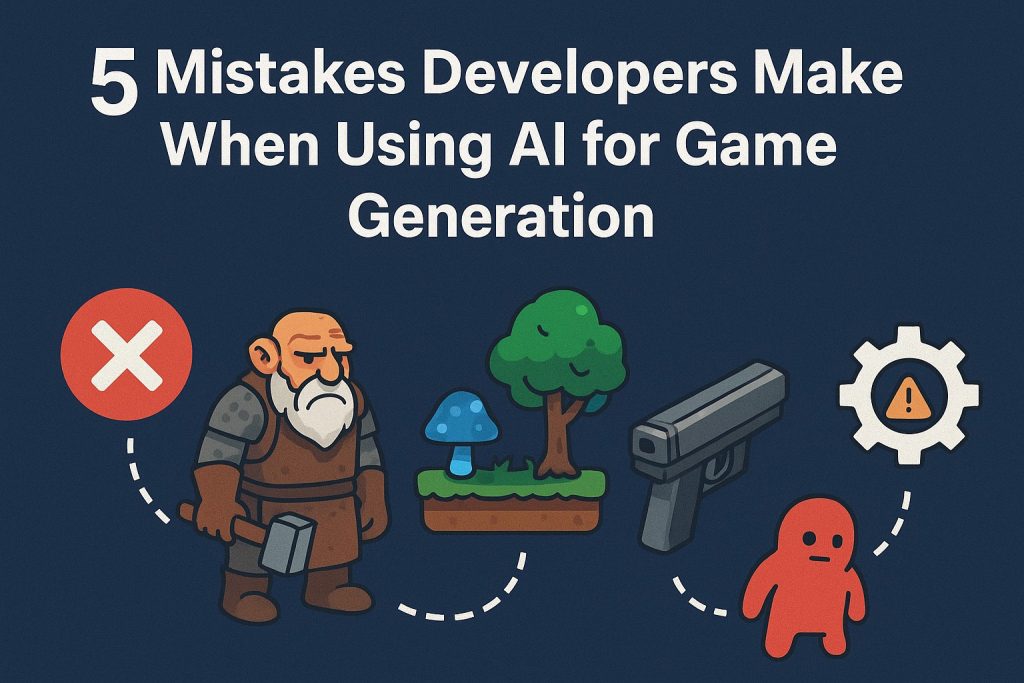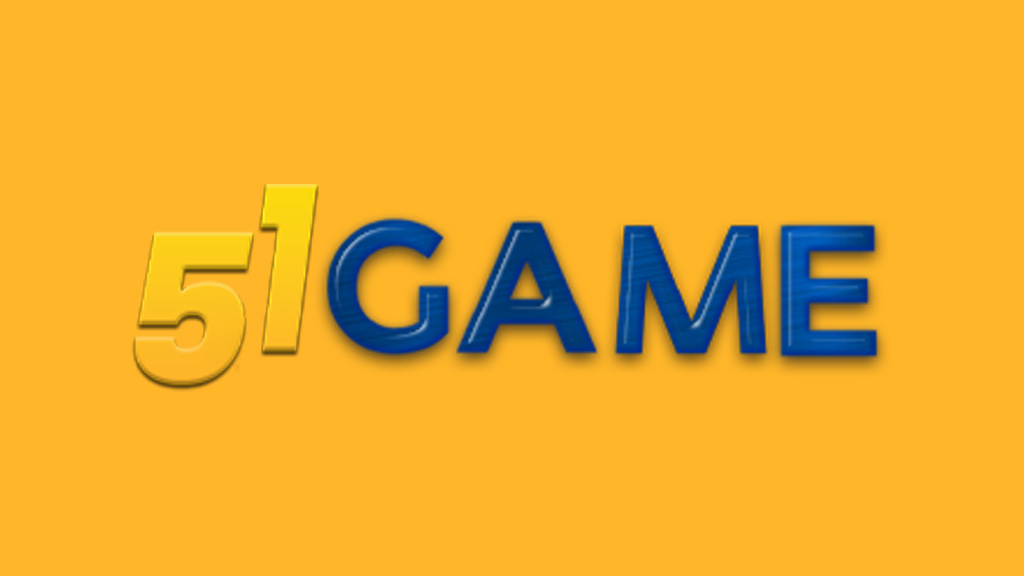
You’ve spent weeks coding the core mechanics of your game. It’s brilliant. It’s fun. Now, all you need are the assets. As an indie developer, this is often where the real struggle begins. You have a grand vision, but your time and budget are tight. Hiring an artist is expensive, and learning to create high-quality assets yourself can feel like a whole other career.
This is where the promise of AI for game generation sounds like a dream come true. With the right prompt, you can generate characters, environments, and props in seconds. The hype is real, and the potential is enormous. But AI isn’t a magic button that solves all your problems. Many developers dive in headfirst only to end up with a folder full of generic, inconsistent, or unusable assets.
Using AI effectively is a skill. It’s a partnership between your creative vision and the tool’s capabilities. This guide will walk you through the five most common indie developer mistakes when using AI for game asset generation and show you how to avoid them, so game creators can turn creativity into cash. We’ll also explore how a tool designed for developers, like Astrocade, can help you navigate these challenges.
Mistake 1: Relying on Generic Prompts
Have you ever typed “fantasy sword” into an AI image generator and been underwhelmed by the result? It’s a common experience. The biggest mistake developers make is using simple, generic prompts and expecting unique, inspiring results. The AI doesn’t know the lore of your world, the personality of your character, or the specific mood you’re trying to evoke. It can only work with what you give it.
Vague prompts lead to bland, cookie-cutter assets that feel like they could belong in any game. They lack specificity and character, contributing to that “soulless” AI look that many players are quick to criticize.
Think of prompt engineering as giving directions. A bad prompt is like telling a taxi driver, “Take me to a restaurant.” A good prompt is like saying, “Take me to a quiet, affordable Italian restaurant in the North End that has outdoor seating.” The more detail you provide, the closer you’ll get to your desired destination.
- Bad Prompt: orc character
- Good Prompt: Pixel art character sprite of a grumpy, old orc blacksmith with a braided white beard, wearing a leather apron over a chainmail shirt, wielding a glowing hammer. Side-scroller perspective, 64×64 resolution, muted earth-tone color palette.
How Astrocade Helps
Mastering prompt engineering can feel like a full-time job. Astrocade simplifies this with guided prompt builders and style libraries. Instead of starting from a blank text box, Astrocade provides structured inputs that help you think like an artist. Like in the eagle defense, you can also specify art styles, camera angles, color palettes, and other key details with simple dropdowns and toggles, ensuring you create detailed prompts without the guesswork.
Mistake 2: Ignoring Art Direction and Consistency
So, you’ve generated a fantastic-looking character. Then you generate a background, and then a few items. Separately, they all look great. But when you put them together in your game engine, something is off. The character is cel-shaded, the background is photorealistic, and the items look like they’re from a pixel art game.
This is a classic pitfall. Generating assets one by one without a unified art direction results in a chaotic and visually jarring game. A strong, consistent art style is crucial for creating an immersive world. Before you generate a single asset, you need a clear vision for your game’s look and feel. What is your color palette? What style defines your world pixel art, low-poly, watercolor, or cel-shaded?
Establishing this art bible upfront will guide your entire game asset generation process. Every prompt should be filtered through the lens of your established art direction to ensure all AI game assets feel like they belong in the same universe.
How Astrocade Helps
Maintaining visual cohesion is exactly what Astrocade was designed for. You can train a custom AI model on your own concept art, ensuring every asset it generates adheres to your unique style. Alternatively, you can select one of Astrocade’s style-consistent models. This means whether you’re generating a character, a tree, or a treasure chest, the output will always match your game’s established aesthetic, saving you countless hours of editing and re-rolling.
Mistake 3: Overlooking Iteration and Refinement
A common misconception is that AI should produce a perfect, game-ready asset on the first try. When it doesn’t, developers can get frustrated and abandon the tool. But AI generation isn’t a one-and-done process. It’s a creative partnership that requires iteration, feedback, and human refinement.
The first output is rarely the final product. It’s a starting point a piece of clay that you, the artist, need to shape. You might need to adjust the prompt, re-roll the generation a few times, or take the generated asset into an editing program for touch-ups. Maybe the anatomy of a character isn’t quite right, or the lighting on an object feels flat.
Your creativity and artistic judgment are essential. The AI provides the raw material, but you provide the final polish that gives the asset life and makes it truly yours.
How Astrocade Helps
Astrocade embraces the iterative nature of creative work. The platform is built for rapid iteration, allowing you to quickly tweak prompts and generate new versions of an asset. It also includes built-in editing tools, so you can make minor adjustments like fixing a weird finger or cleaning up an artifact without having to export to another program. This seamless workflow keeps you in the creative zone, making it easier to refine and perfect your assets efficiently.
Mistake 4: Forgetting about Technical Constraints
Let’s say you’ve generated a stunning 3D model of a sci-fi rifle. It looks incredible. But when you try to import it into your game engine, it has a million polygons, the file format is incompatible, and the textures aren’t power-of-two. It’s a technical mess that will tank your game’s performance.
Many generic AI tools aren’t built with the technical requirements of game development in mind. They produce beautiful images or models, but ignore the practical constraints of a real-time game engine like in a Grand Theft Astro. This creates a ton of extra work for you, as you’ll have to manually optimize every asset, converting file types, retopologizing models, and resizing textures.
Thinking about technical needs from the start is critical. Are you making a 2D or 3D game? What texture resolutions does your target platform support? What’s your polycount budget? Answering these questions before you start generating will save you major headaches later.
How Astrocade Helps
As a tool made by and for game developers, Astrocade understands these technical hurdles. It’s designed to export assets in game-ready formats that respect the technical limitations of engines like Unity and Unreal. You can specify texture sizes, file types, and other technical parameters directly within the platform. This ensures that the AI game assets you generate are not just beautiful but also optimized and ready to be dropped straight into your project.
Mistake 5: Fearing the “AI Look”
There’s a growing sentiment in the gaming community against games that look “too AI-generated.” This backlash is often aimed at titles that feel unoriginal, inconsistent, or visually generic. Many developers are now afraid that using AI will immediately brand their game as low effort or soulless.
However, the dreaded “AI look” isn’t an inherent property of the technology itself. It’s usually a symptom of the four mistakes we’ve already discussed: using generic prompts, lacking a consistent art direction, failing to iterate, and ignoring the human touch.
When a developer leans on AI as a crutch rather than using it as a tool, the result is content that lacks a unique creative voice. The key is to remember that you are the creative director. The AI is your assistant, not your replacement. Your vision, your taste, and your artistic choices are what will make your game stand out.
How Astrocade Helps
Astrocade is fundamentally designed to empower your creativity, not replace it. By giving you fine-grained control over style, prompts, and technical outputs, it helps you guide the AI to create assets that truly reflect your vision. It helps you avoid the generic pitfalls and produce unique, high-quality assets that feel handcrafted. The goal is to make players say, “Wow, what a cool art style,” not “That looks like AI.”
Bring Your Vision to Life, the Smart Way
Using AI game generation can be a transformative advantage for indie developers, but only when approached with the right mindset and tools. By avoiding these five common mistakes, you can move past creating generic content and start producing high-quality, consistent, and unique assets that bring your game to life.
Remember, the most powerful creative engine is still your own imagination. AI is just a tool to help you realize it faster and more efficiently.
